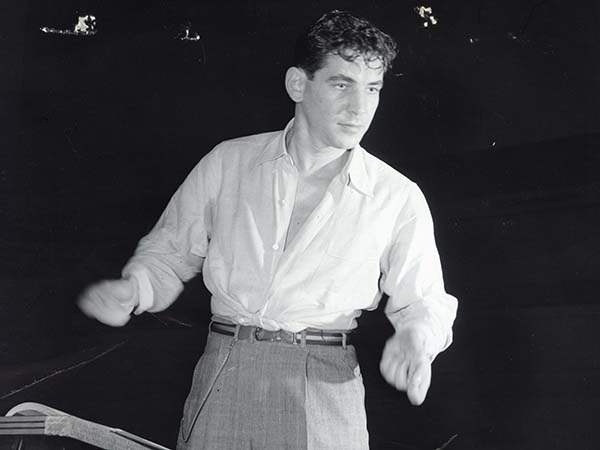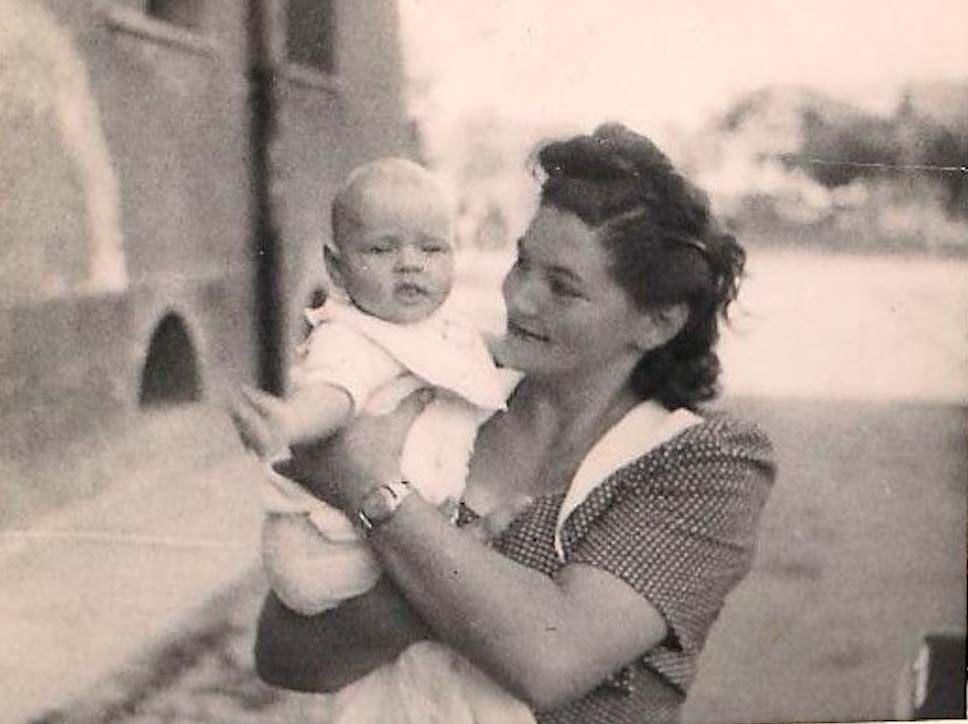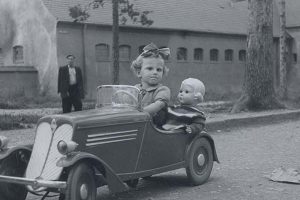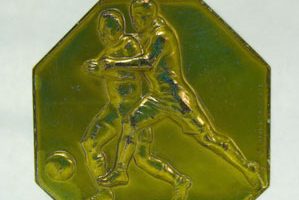
A Rhapsody for the Generations
The impact of Leonard Bernstein’s performance at the Landsberg DP camp
At any moment, in any location, on any radio or concert hall, when I hear the familiar clarinet trill introducing Gershwin’s Rhapsody in Blue, my heart stops for those 17 notes; thereafter, my heart continues to race and goosebumps appear, until the crescendo, when my eyes swell with tears and my breath stops. This particular piece has had a profound emotional effect on me and my entire family.
Rewind history to the displaced persons (DP) camp in Landsberg, Germany in May 1948, where hundreds of Holocaust survivors gathered to listen to the young maestro, Leonard Bernstein, conduct an orchestra of survivor-musicians.
The American Jewish Joint Distribution Committee (JDC), distributed supplies in the DP camps of Europe that nourished both body and soul; food, medicine, clothing, tools, equipment, and educational, cultural, and religious materials. JDC funds supported medical facilities, schools, and synagogue, in addition to providing for vocational training programs, legal representation, and emigration assistance to survivors in the DP camps. JDC also financed cultural activities for those interned in the DP camps. These cultural activities included film programs, concerts, reading rooms and libraries, sports activities, and lectures. An extension of these cultural activities were the morale-boosting tours, in which JDC brought performing artists into the DP camps to entertain internees and boost their spirits.
My 90-year-old aunt, Reva Sidrer Baran, recalls the many performers who came from abroad, sponsored by the JDC. These performances truly raised the spirits of the traumatized shearit haplita (surviving remnant). She recalls how “we were all very moved as we realized how fortunate we were to be alive to hear such a concert.” She proudly described how my surviving grandfather, Feival Sidrer, was the administrator of the camp theater building and the acting troupe, thus he was involved with preparing the theater for the Bernstein concert. My two surviving aunts were also in the audience, as were my parents.
Group portrait of members of the Hazamir Chorale at the Landsberg DP camp, Germany, c. 1947. Ettie’s mother Zlata Santocki Sidrer and aunts Nechama Santocki and Reva Sidrer are standing in the center of the second row. Photo originally owned by Nechama Santocki Shneorson and now part of the Nechama Shneorson Papers at USHMM.
Bernstein and the 17-member rag-tag group of survivor-musicians played a wonderful program of music, but for my parents, the most memorable was the finale of Rhapsody in Blue.
After miraculously surviving three horrible years in the Kovno ghetto (Lithuania), then transports and concentration camps, experiencing starvation, disease, abuse, slave labor, a death march, and illegal and dangerous border crossings, my parents found themselves in the audience on this special evening. I can only imagine that being in the audience and listening to this music made them feel human, alive, civilized and whole again.
I cannot declare a correlation, but 11 months after this concert I was born in Landsberg, joining the ranks of the world’s largest baby boom. We immigrated to the United States in 1950.
After time, we acquired a used TV set thanks to my father’s work as a TV repairman. I vividly recall watching the new TV series “Leonard Bernstein’s Young People’s Concerts.” My mother watched with me and would often repeat her story: “You know, I saw Leonard Bernstein when he came to Landsberg to conduct a concert for us.” She made sure we never missed these TV lessons. Her love for Bernstein and her enthusiasm for music were part of my childhood memories and impacted me for the rest of my life. While not an expert, I am a great lover of all forms of music—especially Gershwin and Bernstein.
My aunt, Nechama Santocki Shneorson, met Leonard Bernstein in the elevator of a New York City department store in which she worked. She ran up to him and told him “I heard you play in Landsberg; you changed my life.” Bernstein seemed affected by her comment.
Indeed, it is hard to describe the transformation in my parents whenever they listened to Rhapsody in Blue on radio or records. Both my sister and I remember how they would listen intently while looking out into space, seemingly transported to another time and place. Papa told my sister how he built a record player almost from scratch in the DP camp, and with his first savings he bought his very first record: Rhapsody in Blue, with Benny Goodman on clarinet. My parents adored music, especially this piece. Their love was transferred to all of us, but particularly to my younger sister who went on to pursue a career in music and eventually stage a one-woman show entitled “George & Jeanne—Jeanne Rabin Sings George Gershwin.”
Group portrait of members of the Hazamir Chorale at the Landsberg DP camp, Germany, c. 1947. Ettie’s aunt Nechama Santocki and grandfather Feival Sidrer are the second and third from the left in the first row. Photo originally owned by Nechama Santocki Shneorson and now part of the Nechama Shneorson Papers at USHMM.
Over the last three years, on a few separate coincidental occasions, I learned that this life-altering concert affected not only our family, but other families as well. After reading about a film entitled Mr. Bernstein,” I found and contacted Deb Filler, who went on to convert her survivor-father’s memories of that concert into a film which rang true to my ears . . . and my heart. We shared our inherited memories from that same event—like old friends reminiscing about an event we never experienced.
On another occasion, sitting in a concert hall during the travelling exhibit “Violins of Hope,” I listened to the cellist, Janet Horvath, describe her father George Horvath’s memories after the war. In her introduction she recounted how he was the cellist in that same orchestra of ex-concentration camp survivors. She told the audience that performing under the maestro, Leonard Bernstein in ‘a’ DP camp was the highlight of his life. My heart raced until intermission, when I ran backstage, found the cellist, and shouted: “and they played Rhapsody in Blue at that concert, right?” “How do you know?” she responded to this crazy interloper. And we hugged tearfully, after I told her about my parents’ memories.
These fellow 2G’s (second generations) then introduced me to Anat Cohen, who wrote an essay entitled “Intersecting Circles” after the 70-year reunion celebration of this concert, in May 2018. She described the reunion and the impact of this concert on the children of the survivors, some of whom were musicians in the Ex-Concentration Camp Orchestra. I vicariously enjoyed the description of the event but was saddened to learn that I never knew about it in advance in order to participate.
Leonard Bernstein and George Gershwin are holy figures in our home as the result of that inspirational concert in May 1948, sponsored by the American Jewish Joint Distribution Committee . . . and that concert had a life-altering impact not only on those in the audience . . . but also on those in the next generation.
If you or a family member attended a concert in a DP camp or have similar memories, please share them with us at [email protected].
About the Author
Author, educator, and speaker Ettie (Sidrer) Zilber was born in the Landsberg displaced persons (DP) camp, where her parents resided from 1946-1950. She now resides in Phoenix, Arizona. This story was shared with her permission.







